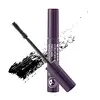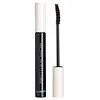What's inside
What's inside
 Key Ingredients
Key Ingredients

 Benefits
Benefits

 Concerns
Concerns

 Ingredients Side-by-side
Ingredients Side-by-side

Water
Skin ConditioningCarnauba Acid Wax
AbsorbentCI 77499
Cosmetic ColorantAcrylates/Ethylhexyl Acrylate Copolymer
Acrylates Copolymer
Palmitic Acid
EmollientStearic Acid
CleansingBeeswax
Emulsion StabilisingTriethanolamine
BufferingPvp
Emulsion StabilisingGlycerin
HumectantVp/Hexadecene Copolymer
Cetearyl Alcohol
EmollientEuphorbia Cerifera Cera
AstringentLanolin
EmollientSorbitan Sesquioleate
EmulsifyingPolyvinyl Alcohol
Dimethicone
EmollientGlyceryl Stearate
EmollientMagnesium Aluminum Silicate
AbsorbentPhenoxyethanol
Preservative1,2-Hexanediol
Skin ConditioningHydroxyethylcellulose
Emulsion StabilisingAlcohol Denat.
AntimicrobialCaprylyl Glycol
EmollientLaureth-21
CleansingEthylhexylglycerin
Skin ConditioningTocopheryl Acetate
AntioxidantCollagen Extract
Skin ConditioningDisodium EDTA
Hydrolyzed Collagen
EmollientCollagen
MoisturisingSoluble Collagen
HumectantAtelocollagen
Skin ConditioningPotassium Myristoyl Hydrolyzed Collagen
Skin ConditioningRosin Hydrolyzed Collagen
Skin ConditioningSoluble Collagen Crosspolymer
EmollientWater, Carnauba Acid Wax, CI 77499, Acrylates/Ethylhexyl Acrylate Copolymer, Acrylates Copolymer, Palmitic Acid, Stearic Acid, Beeswax, Triethanolamine, Pvp, Glycerin, Vp/Hexadecene Copolymer, Cetearyl Alcohol, Euphorbia Cerifera Cera, Lanolin, Sorbitan Sesquioleate, Polyvinyl Alcohol, Dimethicone, Glyceryl Stearate, Magnesium Aluminum Silicate, Phenoxyethanol, 1,2-Hexanediol, Hydroxyethylcellulose, Alcohol Denat., Caprylyl Glycol, Laureth-21, Ethylhexylglycerin, Tocopheryl Acetate, Collagen Extract, Disodium EDTA, Hydrolyzed Collagen, Collagen, Soluble Collagen, Atelocollagen, Potassium Myristoyl Hydrolyzed Collagen, Rosin Hydrolyzed Collagen, Soluble Collagen Crosspolymer
Water
Skin ConditioningAcrylates Copolymer
Stearic Acid
CleansingCopernicia Cerifera Wax
Beeswax
Emulsion StabilisingHydrogenated Polyisobutene
EmollientAlcohol Denat.
AntimicrobialTriethanolamine
BufferingCellulose
AbsorbentAcacia Senegal Gum
MaskingParaffin
PerfumingGlyceryl Stearate
EmollientRosa Centifolia Flower Water
Skin ConditioningPrunus Amygdalus Dulcis Oil
Skin ConditioningBetula Platyphylla Japonica Juice
Skin ConditioningAnthemis Nobilis Flower Extract
MaskingTocopheryl Acetate
AntioxidantAcrylates/Octylacrylamide Copolymer
Tromethamine
BufferingDimethicone
EmollientHydroxyethylcellulose
Emulsion StabilisingEthylhexylglycerin
Skin ConditioningPanthenol
Skin ConditioningPhenoxyethanol
PreservativeCI 77499
Cosmetic ColorantWater, Acrylates Copolymer, Stearic Acid, Copernicia Cerifera Wax, Beeswax, Hydrogenated Polyisobutene, Alcohol Denat., Triethanolamine, Cellulose, Acacia Senegal Gum, Paraffin, Glyceryl Stearate, Rosa Centifolia Flower Water, Prunus Amygdalus Dulcis Oil, Betula Platyphylla Japonica Juice, Anthemis Nobilis Flower Extract, Tocopheryl Acetate, Acrylates/Octylacrylamide Copolymer, Tromethamine, Dimethicone, Hydroxyethylcellulose, Ethylhexylglycerin, Panthenol, Phenoxyethanol, CI 77499
Ingredients Explained
These ingredients are found in both products.
Ingredients higher up in an ingredient list are typically present in a larger amount.
Acrylates Copolymer is used as a film-forming agent and texture enhancer.
After applied, Acrylates Copolymer forms a thin film cover that helps skin feel more soft. It can help sunscreens become more water-resistant.
It is also used to make a product more thick.
Learn more about Acrylates CopolymerAlcohol Denat. is an alcohol with a denaturant property. It is created by mixing ethanol with other additives.
This ingredient gets a bad rep because it is irritating and drying - mostly due to its astringent property. Astringents draw out natural oils in tissue, constricting pores and leaving your skin dried out.
However, alcohol denat. is not all that bad.
Due to its low molecular weight, alcohol denat. tends to evaporate quickly. One study on pig skin found half of applied alcohol evaporated in 10 seconds and less than 3% stayed on skin.
This also helps other ingredients become better absorbed upon application.
Studies are conflicted about whether this ingredient causes skin dehydration. One study from 2005 found adding emollients to propanol-based sanitizer decreased skin dryness and irritation. Another study found irritation only occurs if your skin is already damaged.
Small amounts of alcohol are generally tolerated by oily skin or people who live in humid environments.
The rule of thumb is if this alcohol is near the end of an ingredients list, it will probably not affect your skin much.
Also...
This ingredient has antimicrobial and solvent properties.
The antimicrobial property helps preserve products and increase their shelf life. As a solvent, it helps dissolve other ingredients.
Other types of astringent alcohols include:
Learn more about Alcohol Denat.Beeswax is natural wax produced by honey bees and can be synthetically created. It consists mainly of fatty acid esters and long-chain alcohols.
In cosmetics, beeswax is a emollient. Due to its waxy structure, it creates a protective barrier. This barrier prevents water from evaporating off the skin.
This may not be a good ingredient for oily skin. We recommend speaking with a professional if you have concerns.
Beeswax cannot be removed with water, but can be taken off with an oil cleanser.
Beeswax is also antiseptic and contains vitamin A.
Learn more about BeeswaxCi 77499 is also hydrated iron III oxide. It is created from mixing red and black iron oxides. This helps give shades of darkness to a product.
Iron III oxides are classified as inorganic chemicals for coloring.
Dimethicone is a type of synthetic silicone created from natural materials such as quartz.
What it does:
Dimethicone comes in different viscosities:
Depending on the viscosity, dimethicone has different properties.
Ingredients lists don't always show which type is used, so we recommend reaching out to the brand if you have questions about the viscosity.
This ingredient is unlikely to cause irritation because it does not get absorbed into skin. However, people with silicone allergies should be careful about using this ingredient.
Note: Dimethicone may contribute to pilling. This is because it is not oil or water soluble, so pilling may occur when layered with products. When mixed with heavy oils in a formula, the outcome is also quite greasy.
Learn more about DimethiconeEthylhexylglycerin (we can't pronounce this either) is commonly used as a preservative and skin softener. It is derived from glyceryl.
You might see Ethylhexylglycerin often paired with other preservatives such as phenoxyethanol. Ethylhexylglycerin has been found to increase the effectiveness of these other preservatives.
Glyceryl Stearate is a mix of glycerin and stearic acid.
It is used to stabilize the mixing of water and oil ingredients. By preventing these ingredients from separating, it can help elongate shelf life. It can also help thicken the product's texture.
As an emollient, it helps soften skin and supports barrier-replenishing ingredients.
In cosmetics, Glyceryl Stearate is often made from vegetable oils or synthetically produced.
This ingredient may not be fungal-acne safe
Fun fact: The human body also creates Glyceryl Stearate naturally.
Learn more about Glyceryl StearateHydroxyethylcellulose is used to improve the texture of products. It is created from a chemical reaction involving ethylene oxide and alkali-cellulose. Cellulose is a sugar found in plant cell walls and help give plants structure.
This ingredient helps stabilize products by preventing ingredients from separating. It can also help thicken the texture of a product.
This ingredient can also be found in pill medicines to help our bodies digest other ingredients.
Learn more about HydroxyethylcellulosePhenoxyethanol is a preservative that has germicide, antimicrobial, and aromatic properties. Studies show that phenoxyethanol can prevent microbial growth. By itself, it has a scent that is similar to that of a rose.
It's often used in formulations along with Caprylyl Glycol to preserve the shelf life of products.
Stearic Acid is a fatty acid. It is an emollient, emulsifier, and texture enhancer.
As an emollient, stearic acid helps soften skin. It aids the skin's protective barrier by preventing water loss. It also provides a gentle cleansing effect without stripping away natural oils.
Stearic acid may also be used to enhance the texture of products. It can add volume and stabilize ingredients such as water and oil. This can help water and oil ingredients from separating.
Sources of stearic acid include animal or vegetable fats/oils such as coconut or shea. It can be naturally found in butter, cocoa butter, shea butter, vegetable fats, and animal tallow.
This ingredient may not be Malassezia folliculitis, or fungal-acne safe.
Learn more about Stearic AcidTocopheryl Acetate is AKA Vitamin E. It is an antioxidant and protects your skin from free radicals. Free radicals damage the skin by breaking down collagen.
One study found using Tocopheryl Acetate with Vitamin C decreased the number of sunburned cells.
Tocopheryl Acetate is commonly found in both skincare and dietary supplements.
Learn more about Tocopheryl AcetateTriethanolamine is an emulsifier and pH adjuster. It is created using ethylene oxide and ammonia. This gives Triethanolamine a nitrogen core and a similar scent to ammonia.
As an emulsifier, it prevents ingredients from separating and enhances texture by adding volume to a product.
PH adjusters are common in cosmetic products. The pH of a product can affect the effectiveness of other ingredients. A product with a high pH may also irritate the skin.
Learn more about TriethanolamineWater. It's the most common cosmetic ingredient of all. You'll usually see it at the top of ingredient lists, meaning that it makes up the largest part of the product.
So why is it so popular? Water most often acts as a solvent - this means that it helps dissolve other ingredients into the formulation.
You'll also recognize water as that liquid we all need to stay alive. If you see this, drink a glass of water. Stay hydrated!
Learn more about Water